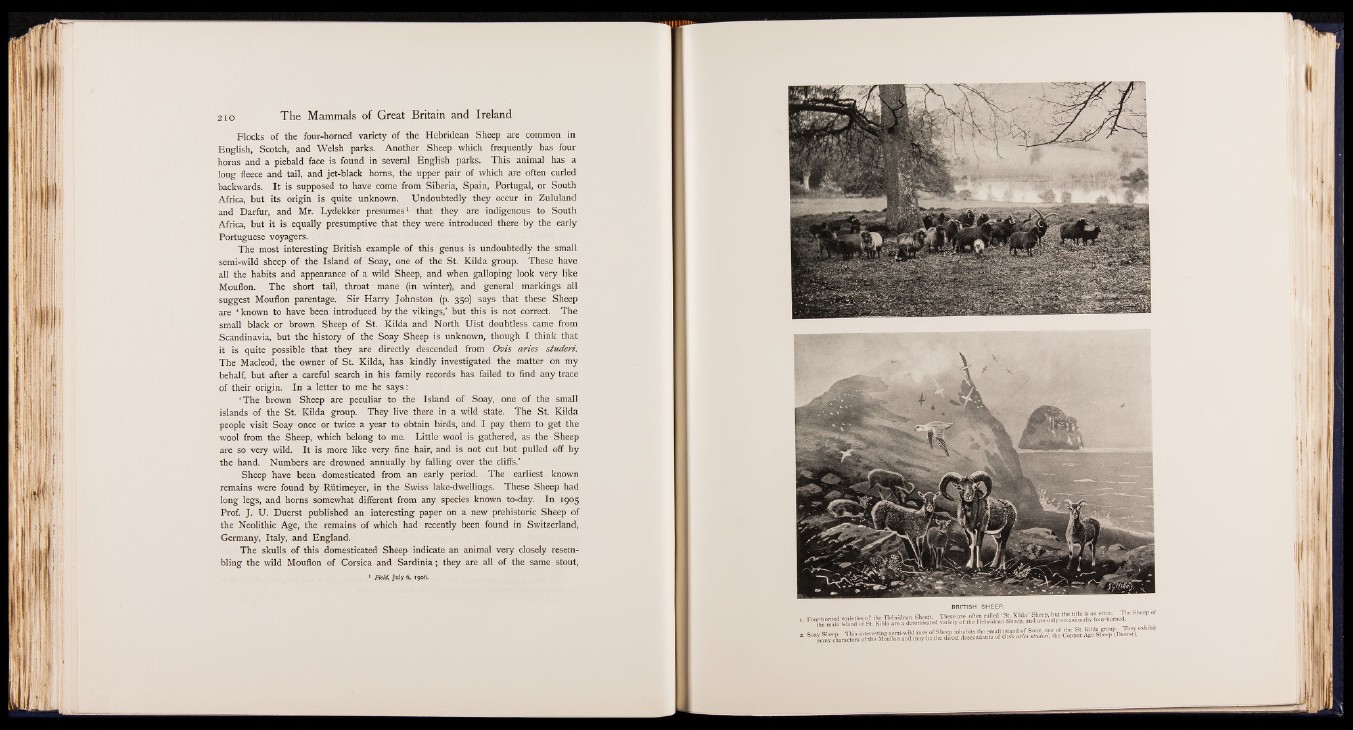
Flocks of the four-horned variety of the Hebridean Sheep are common in
English, Scotch, and Welsh parks. Another Sheep which frequently has four
horns and a piebald face is found in several English parks. This animal has a
long fleece and tail, and jet-black horns, the upper pair of which are often curled
backwards. It is supposed to have come from Siberia, Spain, Portugal, or South
Africa, but its origin is quite unknown. Undoubtedly they occur in Zululand
and Darfur, and Mr. Lydekker presumes1 that they are indigenous to South
Africa, but it is equally presumptive that they were introduced there by the early
Portuguese voyagers.
The most interesting British example of this genus is undoubtedly the small
semi-wild sheep of the Island of Soay, one of the St. Kilda group. These have
all the habits and appearance of a wild Sheep, and when galloping look very like
Mouflon. The short tail, throat mane (in winter), and general markings all
suggest Mouflon parentage. Sir Harry Johnston (p. 350) says that these Sheep
are ‘ known to have been introduced by the vikings,’ but this is not correct. The
small black or brown Sheep of St. Kilda and North Uist doubtless came from
Scandinavia, but the history of the Soay Sheep is unknown, though I think that
it is quite possible that they are directly descended from Ovis dries studeri.
The Macleod, the owner of St. Kilda, has kindly investigated the matter on my
behalf, but after a careful search in his family records has failed to find any trace
of their origin. In a letter to me he says:
‘ The brown Sheep are peculiar to the Island of Soay, one of the small
islands of the St. Kilda group. They live there in a wild state. The St. Kilda
people visit Soay once or twice a year to obtain birds, and I pay them to get the
wool from the Sheep, which belong to me. Little wool is gathered, as the Sheep
are so very wild. It is more like very fine hair, and is not cut but pulled off by
the hand. Numbers are drowned annually by falling over the cliffs.’
Sheep have been domesticated from an early period. The earliest known
remains were found by Rutimeyer, in the Swiss lake-dwellings. These Sheep had
long legs, and horns somewhat different from any species known to-day. In 1905
Prof. J. U. Duerst published an interesting paper on a new prehistoric Sheep of
the Neolithic Age, the remains of which had recently been found in Switzerland,
Germany, Italy, and England.
The skulls of this domesticated Sheep indicate an animal very closely resembling
the wild Mouflon of Corsica and Sardinia; they are all of the same stout,
1 Field, July 6, 1906.